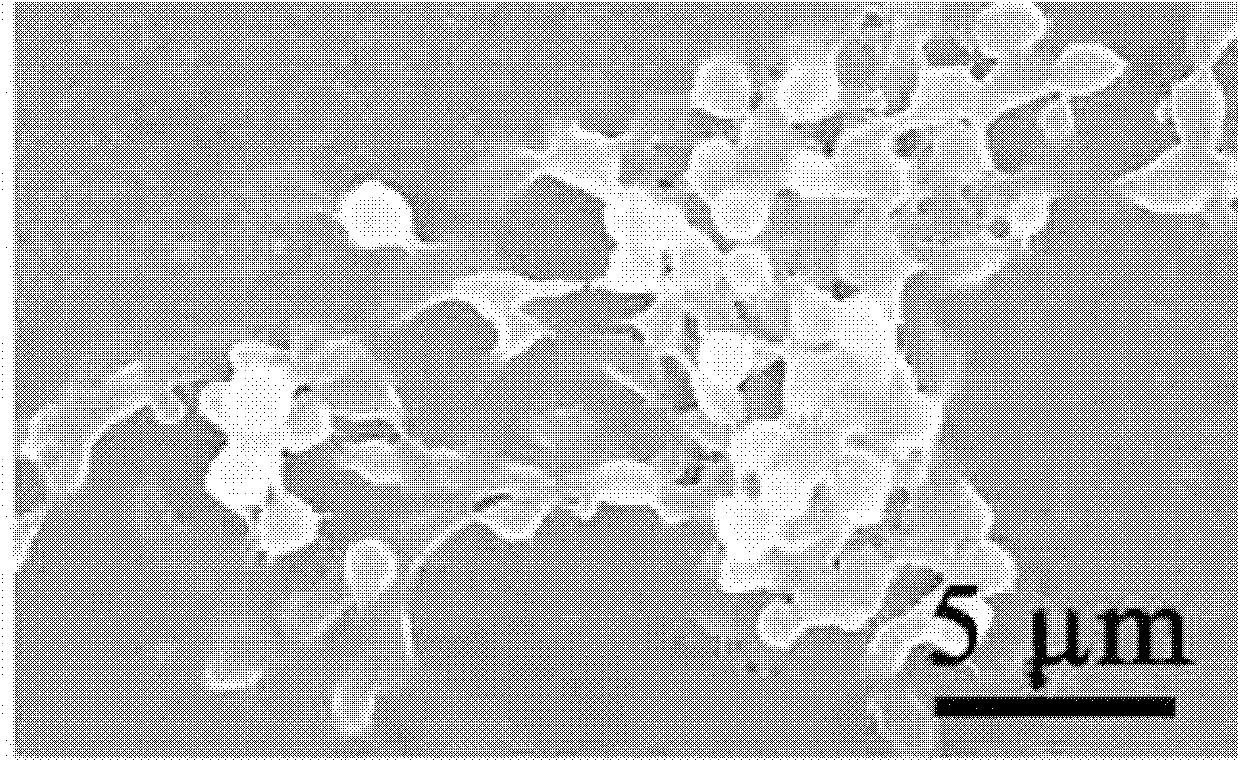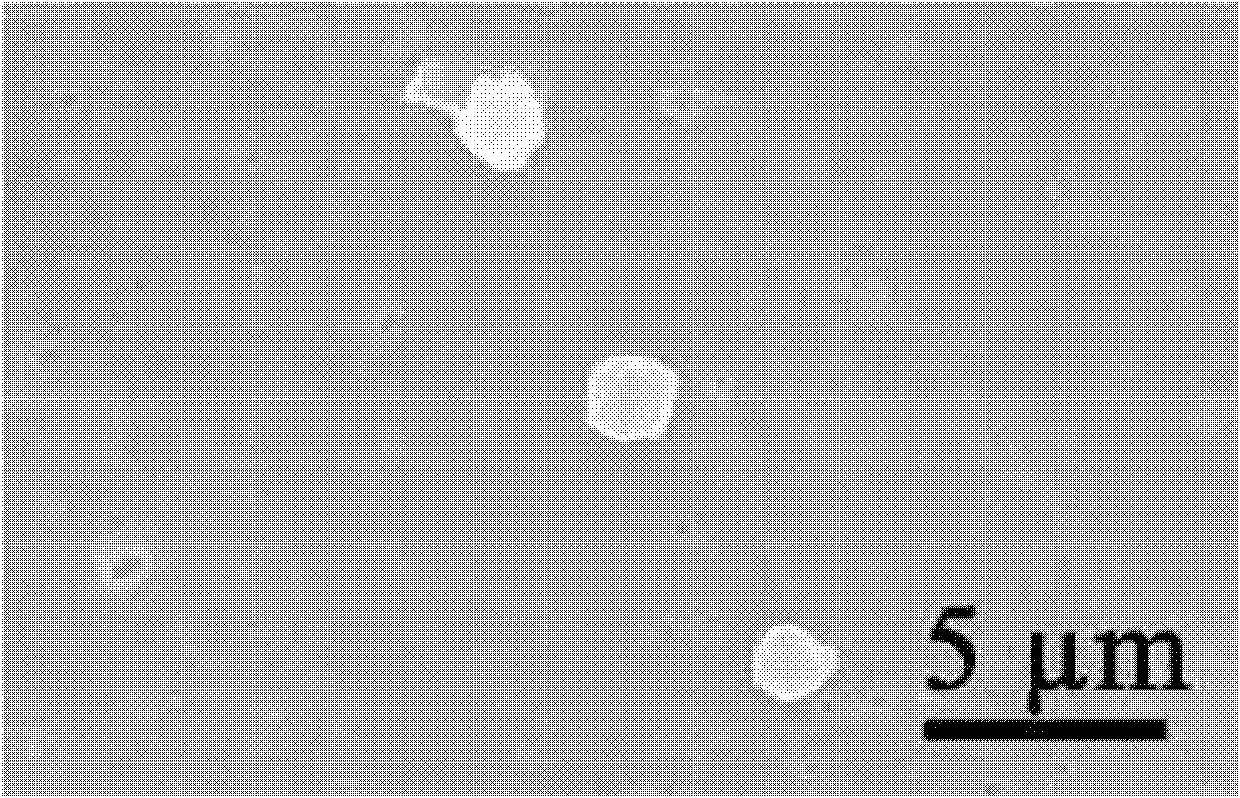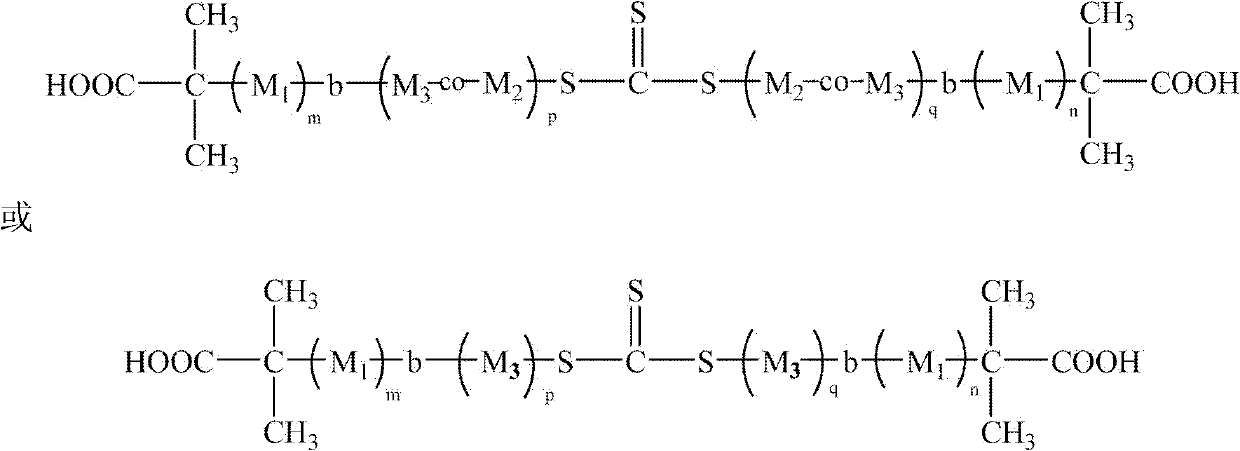Amphiphilic triblock copolymer, preparation method thereof, and polyethersulfone hollow fiber membrane blend-modified by using amphiphilic triblock copolymer
A technology of blending modification and copolymer, which is applied in the manufacture of hollow filaments, fiber chemical characteristics, chemical instruments and methods, etc., can solve problems such as PVP that cannot be fundamentally solved, and achieve excellent blood compatibility and physical and chemical stability Good performance and easy industrialization
- Summary
- Abstract
- Description
- Claims
- Application Information
AI Technical Summary
Problems solved by technology
Method used
Image
Examples
Embodiment 1
[0035] Add 12 parts of vinylpyrrolidone, 0.2 part of trithioester and 0.02 part of 4,4'-azobis(cyanovaleric acid) into 88 parts of water, stir at room temperature to dissolve, then stir to raise the temperature and The reaction was carried out at a temperature of 75° C. for 6 hours, the reaction solution was precipitated with ether, and the resulting solid was vacuum-dried to obtain a light yellow translucent hard product with a yield of about 95%.
[0036] Add 11 parts of the obtained product, 6 parts of styrene and 0.02 part of azobisisobutyronitrile to 83 parts of dimethylformamide, stir at room temperature to dissolve, then stir to raise the temperature and maintain the temperature under nitrogen atmosphere. Reaction at 70°C for 15 hours, the reaction solution was precipitated with ether, the obtained solid was dried in vacuum at 60°C for 48 hours, and then extracted in a Soxhlet extractor with water and acetone for 7 days to remove the homopolymer polyvinylpyrrolidone and ...
Embodiment 2
[0039] Add 10 parts of vinylpyrrolidone, 0.2 parts of trithioester and 0.01 part of 4,4'-azobis(cyanovaleric acid) to 90 parts of water, stir at room temperature to dissolve, then stir to raise the temperature and The reaction was carried out at a temperature of 70° C. for 6 hours, the reaction solution was precipitated with ether, and the obtained solid was vacuum-dried to obtain a light yellow translucent hard product with a yield of about 95%.
[0040] Add 20 parts of the obtained product, 20 parts of styrene and 0.08 part of azobisisobutyronitrile to 60 parts of dimethylformamide, stir at room temperature to dissolve, then stir to raise the temperature and maintain the temperature under nitrogen atmosphere. Reaction at 75°C for 22 hours, the reaction solution was precipitated with ether, and the obtained solid was vacuum-dried at 60°C for 48 hours, and then sequentially extracted with water and acetone in a Soxhlet extractor for 8 days to remove homopolymer polyvinylpyrroli...
Embodiment 3
[0043] Add 14 parts of vinylpyrrolidone, 0.4 part of trithioester and 0.05 part of 4,4'-azobis(cyanovaleric acid) into 86 parts of water, stir at room temperature to dissolve, then stir to raise the temperature and The reaction was carried out at a temperature of 80° C. for 7 hours, the reaction solution was precipitated with ether, and the obtained solid was vacuum-dried to obtain a light yellow translucent hard product with a yield of about 95%.
[0044] Add 12 parts of the obtained product, 6 parts of acrylonitrile and 0.04 part of azobisisobutyronitrile to 82 parts of dimethylformamide, stir at room temperature to dissolve, and then stir to raise the temperature and maintain the temperature under nitrogen atmosphere. Reaction at 70°C for 17 hours, the reaction solution was precipitated with ether, and the obtained solid was vacuum-dried at 60°C for 48 hours, and then sequentially extracted with water and acetone in a Soxhlet extractor for 5 days to remove homopolymer polyvi...
PUM
| Property | Measurement | Unit |
|---|---|---|
| glass transition temperature | aaaaa | aaaaa |
| decomposition temperature | aaaaa | aaaaa |
| pore size | aaaaa | aaaaa |
Abstract
Description
Claims
Application Information
 Login to View More
Login to View More - R&D
- Intellectual Property
- Life Sciences
- Materials
- Tech Scout
- Unparalleled Data Quality
- Higher Quality Content
- 60% Fewer Hallucinations
Browse by: Latest US Patents, China's latest patents, Technical Efficacy Thesaurus, Application Domain, Technology Topic, Popular Technical Reports.
© 2025 PatSnap. All rights reserved.Legal|Privacy policy|Modern Slavery Act Transparency Statement|Sitemap|About US| Contact US: help@patsnap.com



